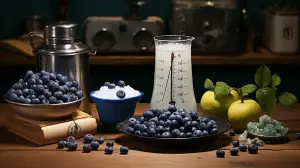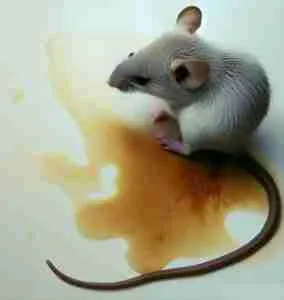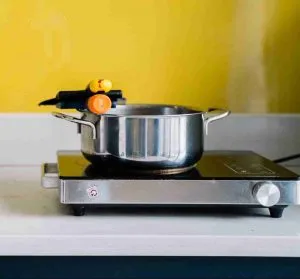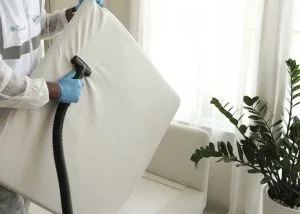Contents
ToggleUnraveling Chalk: What Is It?
To begin with, understanding the composition of chalk is crucial to understanding how it interacts with our clothes. Chalk, in its most common form, is made of calcium carbonate. This substance is essentially a type of limestone that’s derived from the tiny shells of marine organisms. A bit of chemistry and lots of compressions later, we get our friendly neighborhood sidewalk chalk.
Chalk can be harmless until it leaves its telltale marks on your clothes. But fret not! There’s a science to getting chalk stains out of fabric, and we’re about to decode it for you.
Chalk of Different Colors: Does Type Matter?

Before we dive into the stain removal process, it’s important to note that not all chalks are created equal. Traditional white chalk is relatively simple to handle. However, colored chalk could present a bit more of a challenge.
The vibrant colors of colored chalk come from dyes and pigments, which could potentially make a stain more stubborn. However, the principles of stain removal largely remain the same. It may just require a bit more patience and possibly a couple more washes.
Pre-Treatment: The First Line of Defense
Pre-treatment of the stain is a crucial first step in the stain removal process. This step loosens the chalk particles and prepares the fabric for washing.
Begin by gently brushing off the excess chalk. Be careful not to rub the chalk further into the fabric, as this could make the stain more stubborn. Next, using a bit of rubbing alcohol or a commercial stain remover, blot the stain. Let the treatment sit for a few minutes to break down the chalk particles.
Remember that different fabrics may react differently to various pre-treatment solutions. Always test a small, inconspicuous area first to ensure the solution won’t damage your fabric.
Washing: Time to Dive In

After pre-treatment, it’s time to wash the stained clothes. The right water temperature and laundry detergent are key players here.
As a rule of thumb, cold water is typically best for removing chalk stains. Hot water could potentially set the stain further into the fabric. It’s also crucial to choose a laundry detergent that’s appropriate for the fabric and the stain type. For instance, detergents that are specifically designed to tackle tough stains are a good bet here.
After washing, inspect the clothes to see if the chalk stain is gone. If it is, you’re good to go! If not, do not dry the clothes yet. Drying could potentially set the remaining stain, making it even harder to remove.
Repeat Treatments: Second Time’s a Charm
If the stain is still visible after the first wash, it’s time for a repeat treatment. This process simply involves repeating the pre-treatment and washing steps.
Remember, patience is key when it comes to removing stubborn stains. Each treatment is an opportunity for more chalk particles to be removed, so don’t be disheartened if it takes a few tries.
Battle of the Chalk Stains: Home Remedies Vs. Commercial Stain Removers
When a chalk stain disaster strikes, you have two main allies to turn to: home remedies and stain removers. Each has its merits and drawbacks, and the choice depends on your personal preference, availability of resources, and the severity of the stain.
Home remedies for chalk stains often involve common household items such as vinegar or baking soda. Here’s a quick and easy method:
- Mix equal parts white vinegar and water.
- Apply this solution to the chalk stain.
- Gently scrub the area with an old toothbrush.
- Finish and then launder as usual.
Baking soda, on the other hand, works its magic by creating a paste:
- Mix two parts baking soda with one part water.
- Apply the paste to the stain and let it sit for about 20 minutes.
- Rinse off the paste, then wash the clothing as usual.
In contrast, commercial stain removers are crafted with specialized formulas designed to break down stubborn stains. Their potency often outshines home remedies and can tackle the most challenging chalk stains. They come with a steeper price tag and may house stronger chemicals, but their stain-fighting power is typically unparalleled. If you opt for a stain remover, ensure you adhere strictly to the usage instructions on the product’s label.
In case you’re hunting for broader insights into laundry practices, particularly for tricky materials like polyester, you might find our comprehensive guide on “how to wash a polyester blanket” very helpful. This article covers all you need to know about preserving the integrity and vibrancy of polyester fabrics during washing.
Chalk Stain Hacks: Tips and Tricks from the Pros
When it comes to chalk stains, the pros have a few tricks up their sleeves. Here are some insider tips from professional cleaners and those who work with chalk on a regular basis:
- Use Hairspray: Yes, you read that right. Hairspray has been known to help lift chalk stains. Simply spray it on the stain, let it sit for a few minutes, then rinse with cold water before laundering as usual.
- Dish Soap Can Help: For stubborn chalk stains, applying a bit of dish soap directly to the stained area and gently rubbing it in before washing can be effective.
- Time is of the Essence: Treat chalk stains as soon as possible. The longer a chalk stain sits, the harder it will be to remove.
Does Fabric Type Matter? How Different Fabrics Respond to Chalk Stains
Chalk doesn’t discriminate between fabrics. However, the way you treat chalk stains might vary depending on the type of fabric.
Cotton and most synthetic fibers, for instance, are generally sturdy and can handle most stain-removal techniques. However, you may want to use cold water and gentle cycle settings for delicate fabrics like silk and wool.
Denim, being a thicker and more durable fabric, may need a bit more elbow grease. A soft brush can be used to brush off dried chalk, followed by treatment with a stain remover.
| Fabric Type | Stain Removal Technique |
|---|---|
| Cotton | Can handle most stain removal techniques. |
| Synthetic fibers | Usually sturdy enough to withstand most stain removal methods. |
| Silk and Wool | Use cold water and gentle cycle settings. Test any stain removal method on a small area first. |
| Denim | Brush off dried chalk with a soft brush, followed by treatment with a stain remover. More durable, may require more scrubbing. |
Prevention: A Stitch in Time
While understanding how to remove chalk stains is essential, prevention is always better than cure. If you’re dealing with chalk regularly, consider wearing protective clothing or aprons to avoid getting chalk on your clothes in the first place. It’s much simpler to remove chalk from these items than your favorite t-shirt or a pair of jeans.
FAQ
How do you get chalk out of kids’ clothes?
Getting chalk out of kids’ clothes follows the same process. Brush off loose chalk, pre-treat the stain, and wash the garment. If the stain is stubborn, you may need to repeat the pre-treatment and washing steps. Always check the care label first to avoid damaging the clothing.
How does chalk remove stains?
Interestingly, chalk can be used to remove grease stains because it’s highly absorbent and can draw out oils. Simply rub the chalk onto the grease stain, let it sit for a few minutes to absorb the grease, then brush off the chalk and wash as usual.
Are there any fabrics that chalk doesn’t stain?
Chalk can potentially stain any type of fabric. However, it typically doesn’t adhere as strongly to synthetic fabrics as it does to natural ones. Always take care to prevent staining, regardless of fabric type.
What should I do if the chalk stain doesn’t come out after washing?
If the chalk stain remains after washing, don’t panic! It may require several rounds of pre-treatment and washing to fully remove. Whatever you do, don’t dry the fabric until the stain is gone as the heat can make the stain permanent.
Additional Reading
The world of stains is vast and diverse. If you’re looking to broaden your knowledge and handle any stain that life throws at you, we have a selection of comprehensive guides on our website. Here are a few you might find particularly helpful:
- How to Get Burrs Out of Clothes: If you’re a fan of outdoor adventures, you’ll know how pesky burrs can be. This guide will walk you through removing them effectively from your clothes.
- How to Get Fiberglass Out of Clothes: Fiberglass can be a tough customer when it comes to clothes. Our article offers practical tips to help you deal with this tricky material.
- How to Get Grass Stains Out of Jeans: Grass stains can be stubborn, especially on denim. In this guide, we share tried-and-tested methods to get your jeans looking as good as new.
- How to Get Syrup Out of Carpet: Spilled syrup on your carpet? Don’t panic! Our article gives you step-by-step instructions on dealing with sticky situations.
- How to Get Soap Out of Carpet: While soap is usually the solution, it can sometimes be a problem, especially when it ends up on your carpet. Check out our guide to learn the best ways to handle this.
Wrapping Up
And that brings us to the end of our journey exploring whether chalk truly comes out of clothes. As we’ve discovered, with a touch of pre-treatment, meticulous washing, and maybe a couple of repeat treatments, the dilemma of chalk stains can be a forgotten worry.
If other stains like those from burrs, fiberglass, grass or iron have been a bother too, fear not! We have comprehensive guides covering these and more, to help you maintain your clothes in their best condition. Because really, why let stains steal your peace of mind? With the right information, life can be just too short for such worries!























































